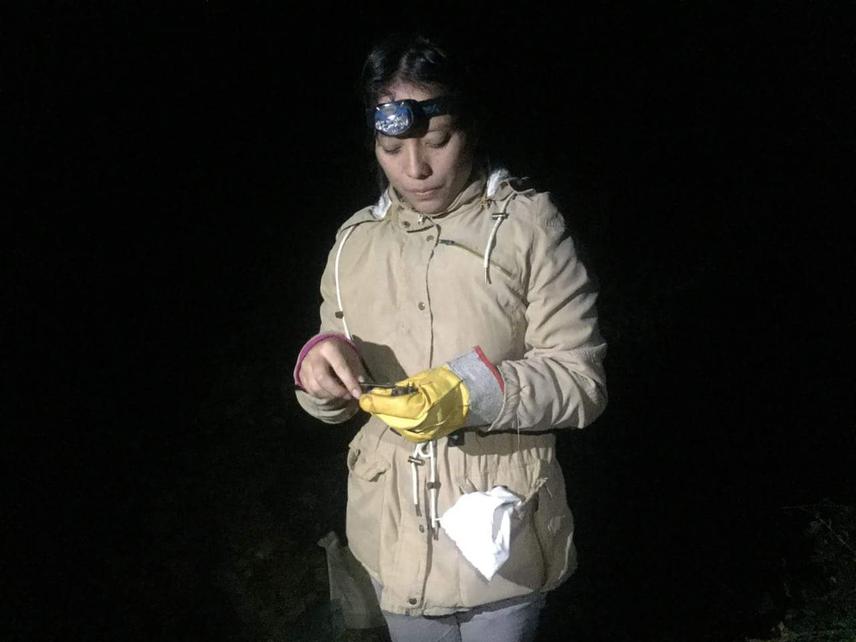Marisol Martínez-Bautista
With this project I want to understand the basic feeding and roosting ecology of Long-nosed bat (Leptonycteris yerbabuenae), and Mexican Long-nosed bat (Leptonycteris nivalis) when their distributions overlap in Central Mexico. I also want to determinate the different effects that the anthropogenic activities have had in their roosting and foraging sites. All this in order to propose management’s strategies to protect these bat species, the ecosystem where they live and the interactions that are generated between them and with the plants from which they feed on.

Leptonycteris yerbabuenae and Leptonycteris nivalis are nectarivorous bats that overlap their distributions in Central Mexico. Both provide important pollination services, which added to their migratory habits, make them vital for conservation of several ecosystems at the continental scale. However, their habitat is under threat due to mostly anthropogenic factors such as roost disturbances and land clearing.
Two very important areas where L. yerbabuenae and L. nivalis co-exist are the Rio Balsas Basin and the Metztitlan Canyon Biosphere Reserve. Therefore I will carry out samplings of diet, foraging activity and resources availability in these two areas from October 2017 to October 2018. With this I pretend to understand the use of resources and mechanisms that allow to two so similar species co-exist, as well as determine key foraging sites and food resources used by the genus Leptonycteris in Central Mexico. At the same time, I will corroborate the presence of the Leptonycteris in places historically reported as roosting sites, providing in this way the possibility of find key roosting sites. Finally, for each of my sampling sites, I will assess the anthropogenic threats they face.
This project will be the first to re-visit sites reported as historical roosts for Leptonycteris. Also will be the first to define important foraging and roosting areas for both species in the Rio Balsas Basin and Metztitlan Canyon Biosphere Reserve in Central Mexico.
With the information obtained about the feeding of L. yerbabuenae and L. nivalis in Mexico, I will contribute to the knowledge of the plants that are important in the diet of both species, and I will be able to propose their protection. On the other hand, know the localization of the roosting and foraging sites that these bats are using, as well as the threats they face, will give me the necessary tools to seek their protection. Finally, doing a comparative analysis between a species in recovery, such as L. yerbabuenae, and an endangered species, such as L. nivalis, I have the possibility to find answers to why only one species is recovering, while the other is still regarded as endangered. With all this information, I will be able to design management strategies for the conservation of both species, the ecosystem where they live and the other species with they interact.